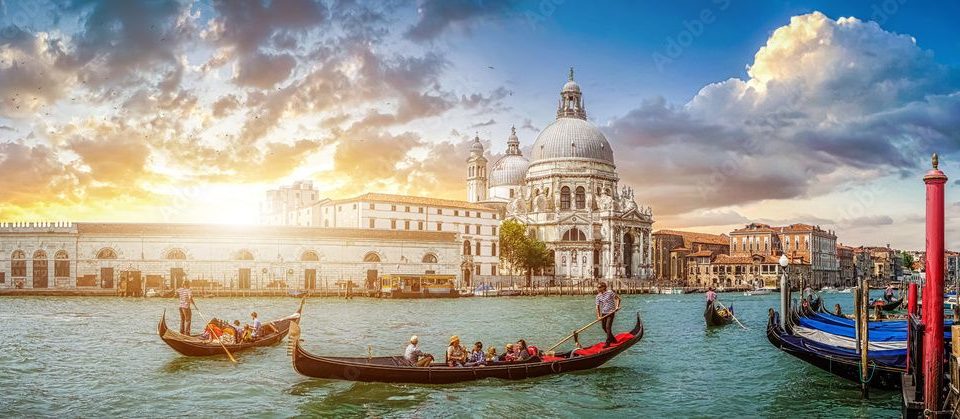The History of Venice
Venice, often referred to as “La Serenissima,” boasts a rich and complex history that spans over a millennium. Founded in the early years of the 5th century, the city has evolved from a refuge against barbarian invasions to one of the most powerful maritime republics in history.
Founding and Early Development
The origins of Venice can be traced back to around 421 AD, when groups of people fleeing the chaos following the fall of the Roman Empire began settling in the lagoon’s islands. Seeking safety from invading forces, these early inhabitants established communities on islands like Rialto, which served as the nucleus for what would become Venice12. By around 450 AD, the population began to settle permanently, influenced significantly by the threat posed by Attila the Hun, which reinforced their decision to abandon mainland life for the relative security of the lagoon2.
Rise of the Republic
By the 8th century, Venice had gained autonomy from Byzantine rule and was recognized as an independent entity. The establishment of a Doge, who served as a leader appointed for life, marked the beginning of its governance structure. The Republic of Venice flourished during the Middle Ages, becoming a major maritime power and trading hub. Its strategic location allowed it to dominate trade routes across the Mediterranean, dealing in spices, silk, and other valuable goods56.The Venetian Arsenal became one of the first factories in history, revolutionizing shipbuilding and contributing to Venice’s naval strength5. The city’s wealth enabled it to engage in significant military campaigns, including participation in the Crusades, which further expanded its influence and territorial reach7.
Cultural Flourishing
The 13th to 17th centuries were characterized by cultural and artistic flourishing. Venice became a center for Renaissance art and architecture, with renowned figures such as Titian and Tintoretto contributing to its rich cultural tapestry. The construction of iconic structures like St. Mark’s Basilica and the Doge’s Palace symbolized its wealth and artistic prowess46.
Decline and Fall
However, by the late 15th century, Venice began to experience decline due to several factors. The fall of Constantinople in 1453 to the Ottoman Turks marked a significant loss for Venetian trade interests in the eastern Mediterranean. Additionally, new trade routes discovered by Portuguese explorers diminished Venice’s monopoly on trade with Asia7.The city’s political landscape became increasingly unstable as it faced military challenges from neighboring states and internal strife. By 1797, Napoleon’s forces invaded Venice during his campaign across Europe. Despite attempts at resistance from locals, Venice fell under French control before being ceded to Austria later that same year124.
Modern Era
Throughout the 19th century, Venice underwent significant changes as part of Italy’s unification process. It officially became part of Italy in 1866 after a plebiscite confirmed its integration into the newly formed Kingdom1. The city then transitioned into a center for tourism and cultural heritage preservation. Today, Venice is celebrated for its unique architecture, intricate canals, and historical significance.Despite facing modern challenges such as rising sea levels and mass tourism, Venice remains an enduring symbol of resilience and cultural richness—an eternal testament to its storied past as one of history’s greatest maritime republics.





